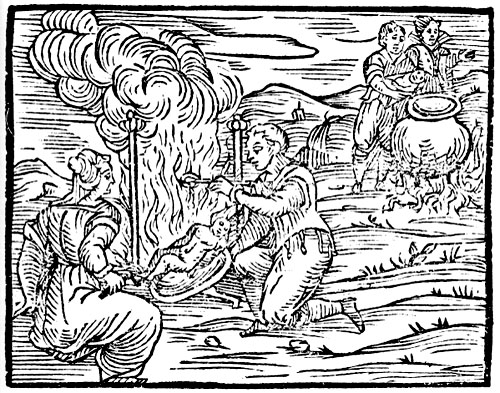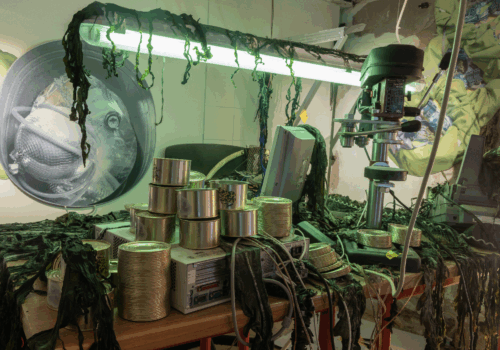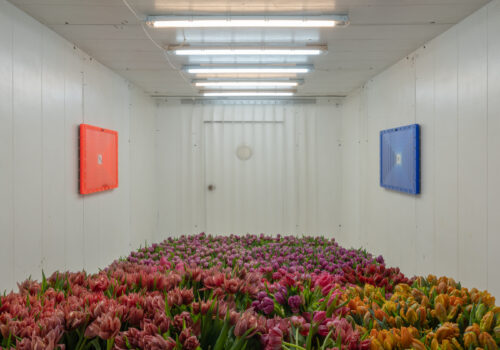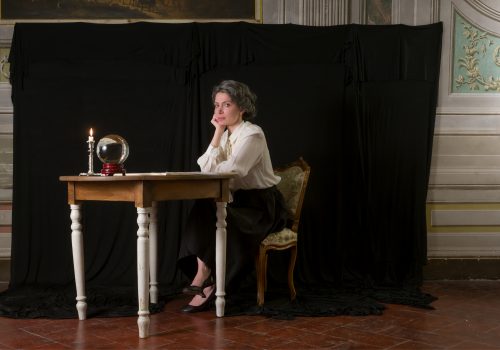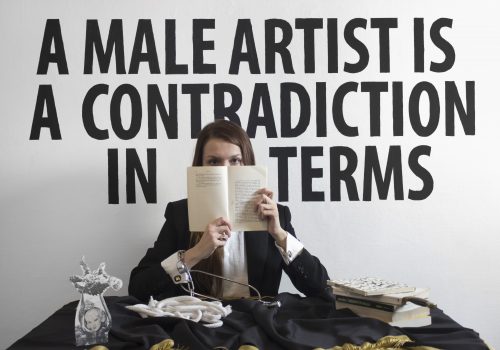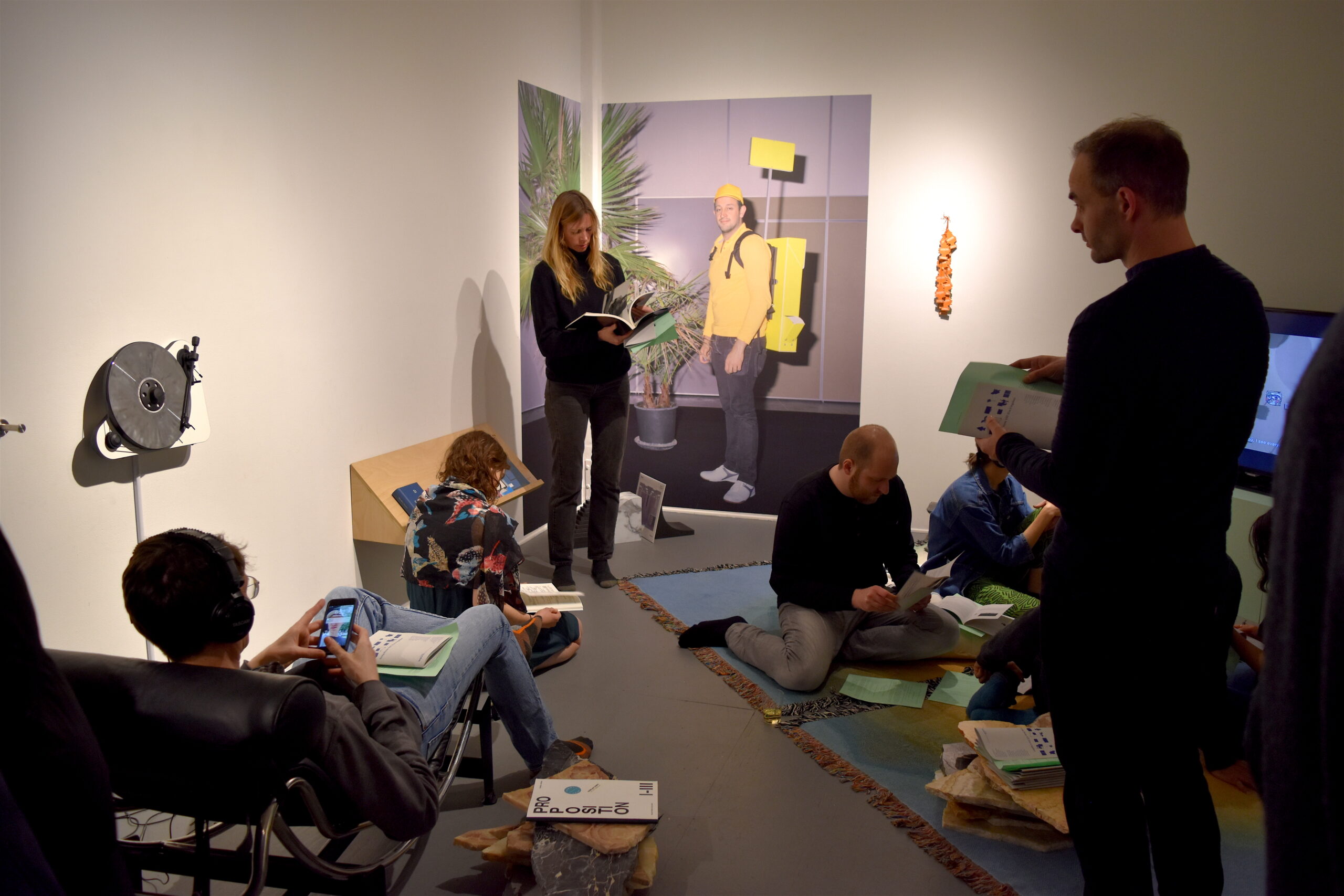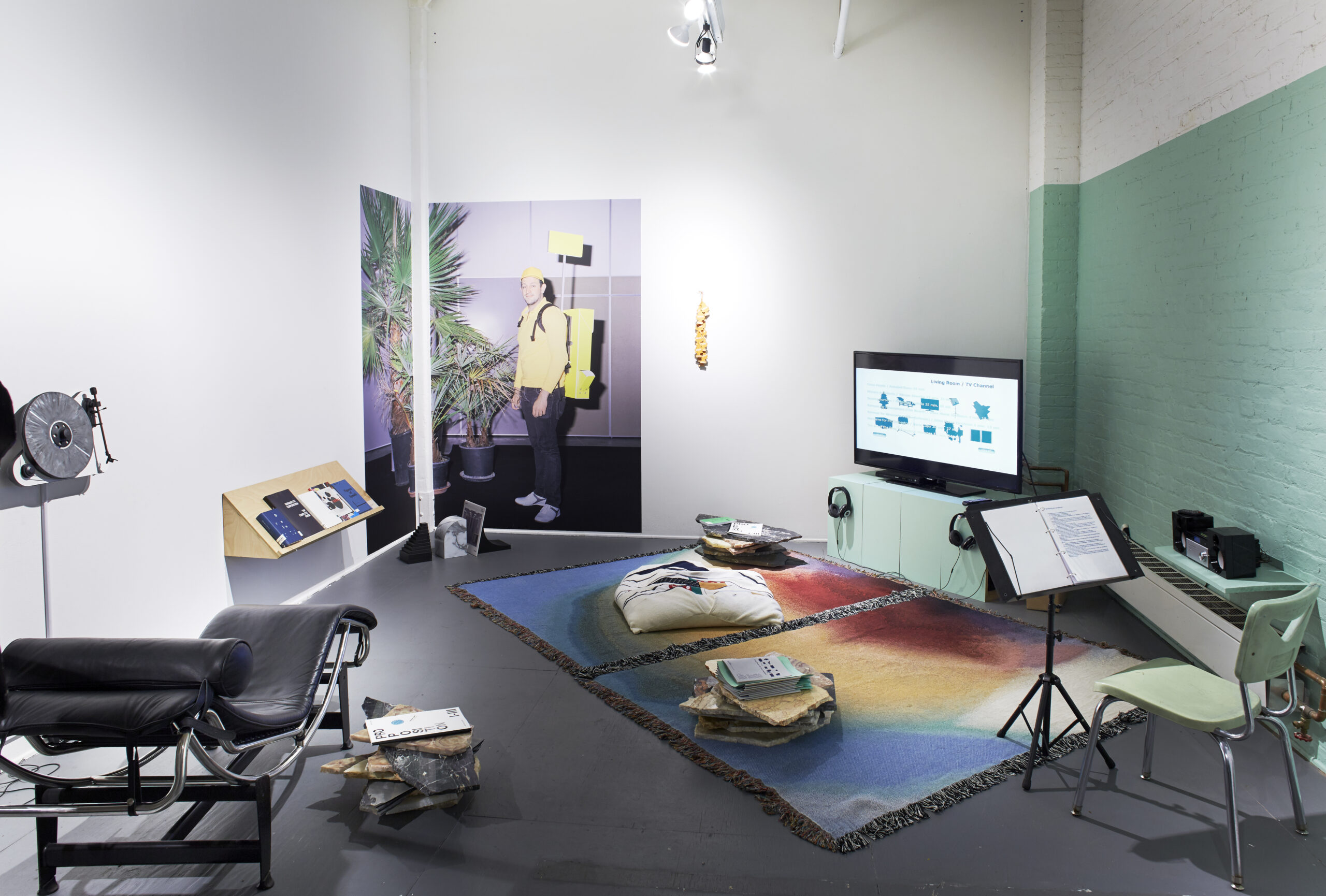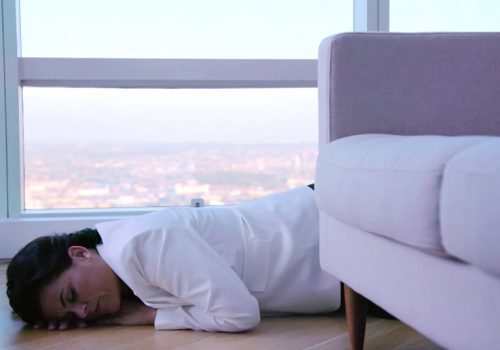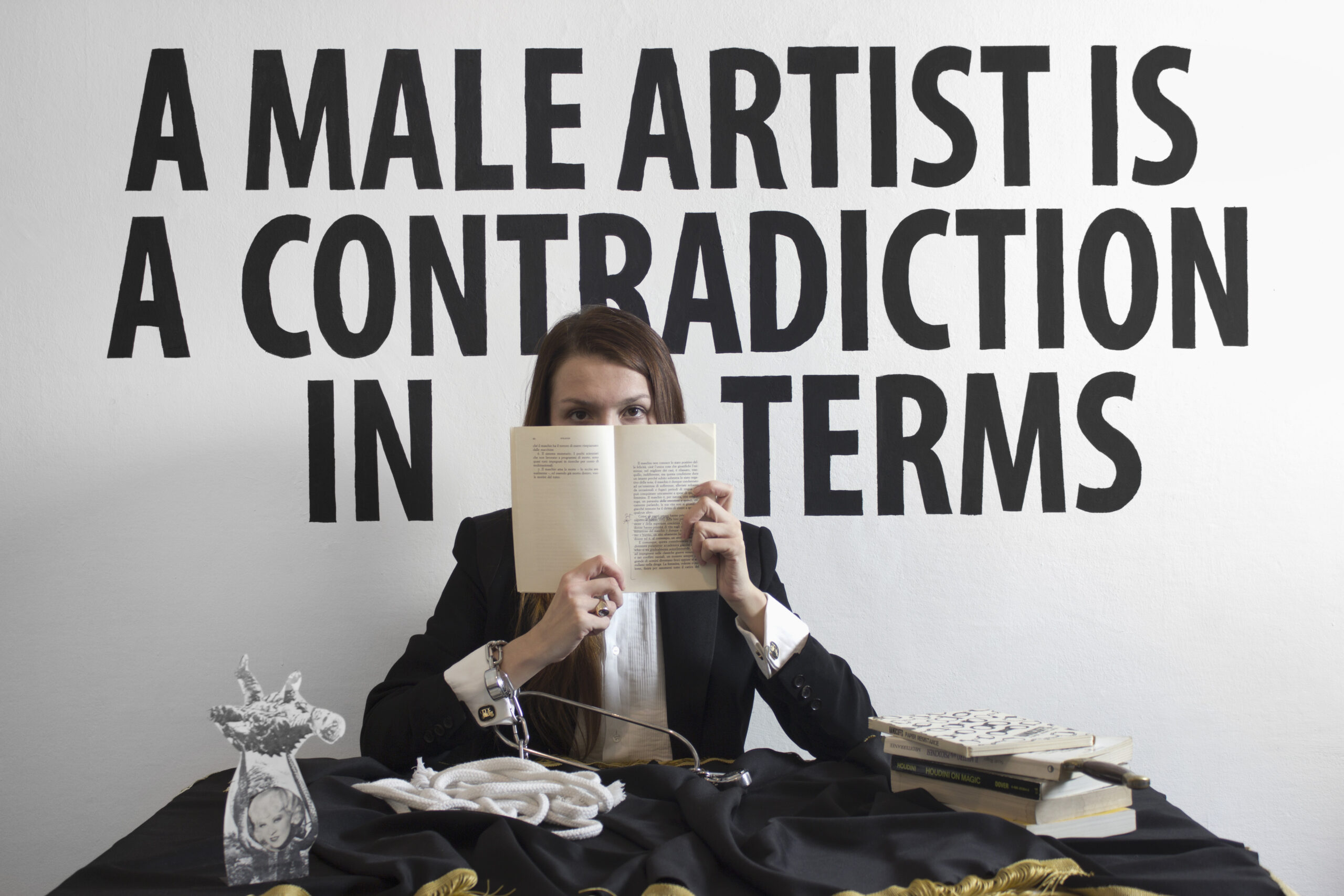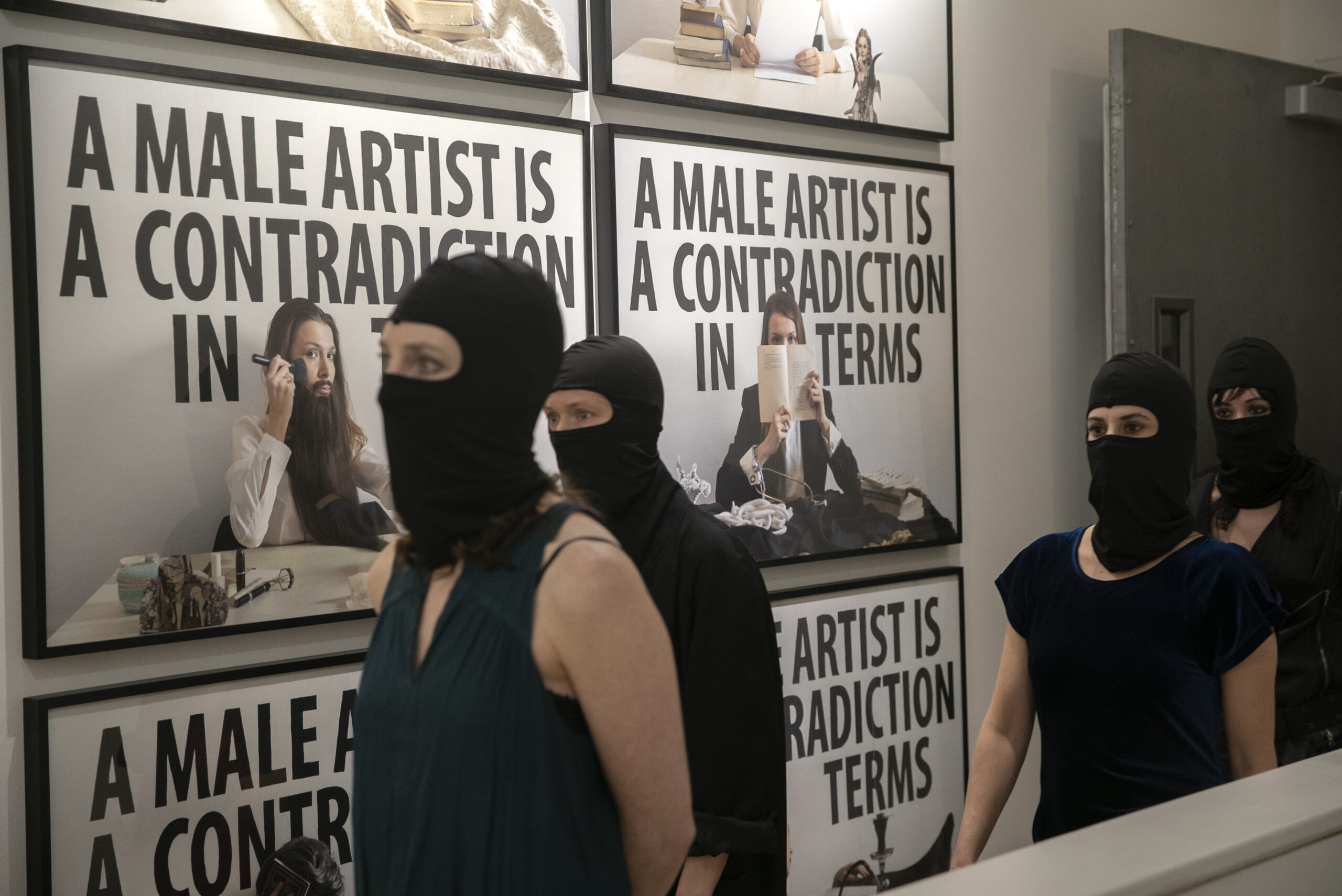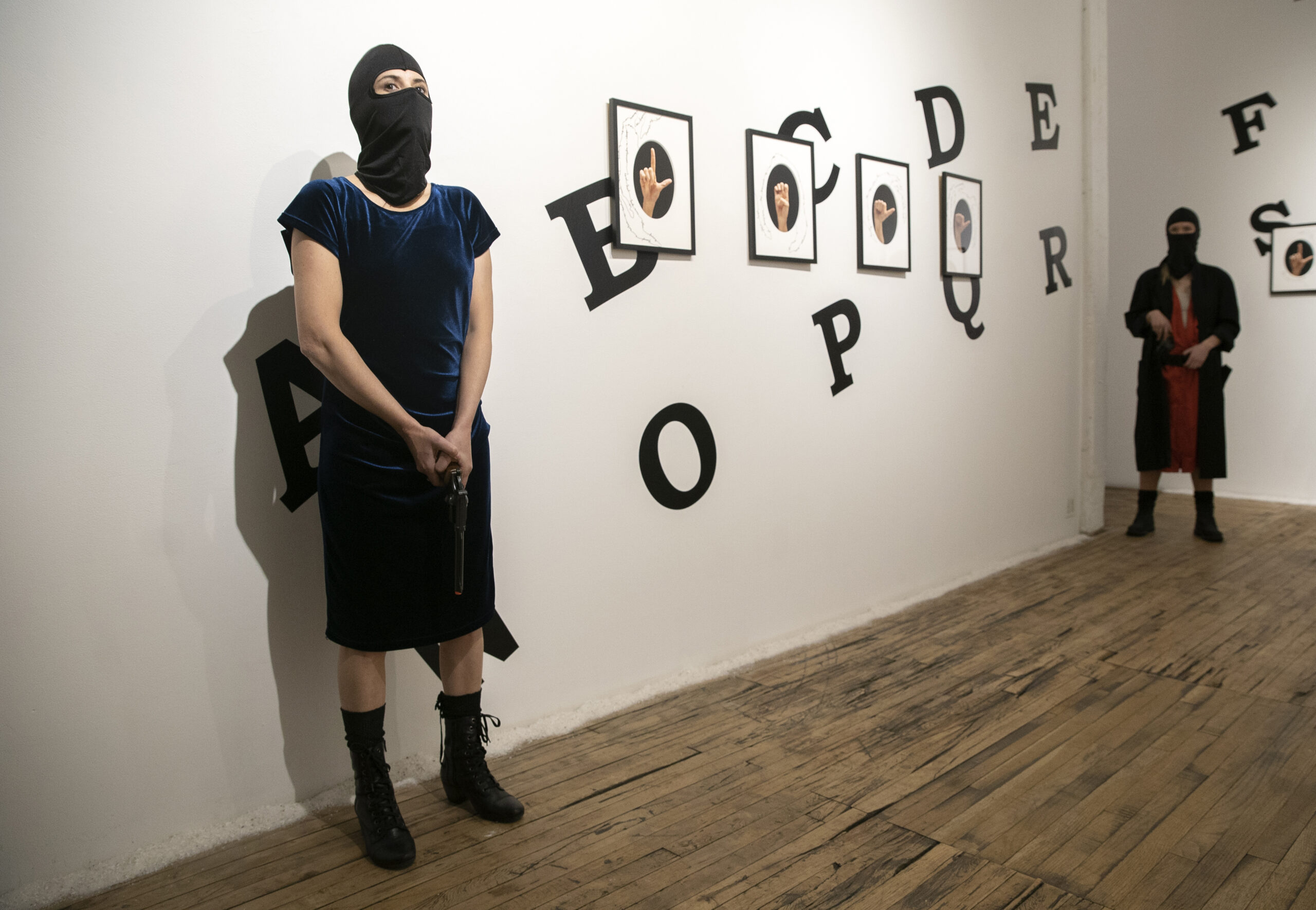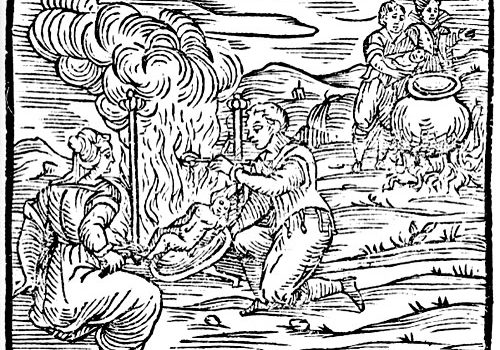February 12, 2019, 6–8pm: Opening Reception and reenactment of the performance The S.C.U.M. Elite (2014)
The International Studio & Curatorial Program announces the opening of LESS LIGHT, an exhibition of work by Chiara Fumai (1978–2017), a 2017 ISCP alumna. The artist’s first solo exhibition on this continent, LESS LIGHT brings together two of Fumai’s pioneering works, The Book of Evil Spirits (2015) and Dogaressa Elisabetta Querini, Zalumma Agra, Annie Jones, Dope Head, Harry Houdini, Eusapia Palladino read Valerie Solanas (2012-13), as well as a reenactment of the performance The S.C.U.M. Elite (2014) at the opening reception.
Fumai’s hybrid practice was deeply rooted in performance and her interests were far-reaching—encompassing radical feminism, chaos magick, terrorist propaganda and Italian Autonomist Marxism. In her work, she frequently deconstructed ideologies that have impeded women’s empowerment. Fumai performed as marginalized historical figures, transmitting occult messages that revived forgotten or discarded narratives.
This is the case in The Book of Evil Spirits, an expansive installation reminiscent of a psychic parlor that includes a suite of fifteen automatic drawings and photographs, performance props and a video in which Fumai channeled Eusapia Palladino, a nineteenth century Italian clairvoyant whose séances were attended by the likes of Nicholas II of Russia and Nobel laureates Marie and Pierre Curie. In turn, she conjures the spirits of a powerful group of women who also appeared throughout Fumai’s oeuvre since 2010. These women—Zalumma Agra, Ulrike Meinhof, and Annie Jones among them—transcend historical periods and geographies, united by their own desire to revolt against the conditions of oppression. Speaking to each other, they vocalize the veracity of Palladino’s séances and recite Carla Lonzi’s Manifesto di Rivolta femminile (1970) as well as other texts also quoted in Fumai’s prior live acts.
In Dogaressa Elisabetta Querini, Zalumma Agra, Annie Jones, Dope Head, Harry Houdini, Eusapia Palladino read Valerie Solanas, Fumai embodies the six people named in the work’s title in photographs. Some of the characters are shown reading from the S.C.U.M. Manifesto and others have it at hand, with a phrase from the manifesto, “A Male Artist is a Contradiction in Terms,” appearing on the wall in each image. The manifesto, published in 1967 by Valerie Solanas, ironically calls for a violent overturning of the patriarchy and the establishment of the Society for Cutting Up Men (S.C.U.M.) as the means to do so. The extreme struggles of Solanas, who is perhaps best known today for having shot Andy Warhol in 1968, are reanimated in each of Fumai’s photographs.
LESS LIGHT is curated by Kari Conte, Director of Programs and Exhibitions, ISCP and Francesco Urbano Ragazzi, directors of the Chiara Fumai archive.
A 45-page print and online publication accompanies the exhibition, with commissioned texts by Stefano Collicelli Cagol and Kari Conte, an interview published in English for the first time between the artist and Francesco Urbano Ragazzi, and a new introduction by the interviewers.
On February 14 at 6:30pm, Silvia Federici (feminist activist, writer, and teacher) will discuss her research on witch-hunting in Europe and the Americas, with reference to both historical events and the development of a capitalist society. The evening will begin with a brief viewing of the exhibition.
On March 12 at 6:30pm, Micki Pellerano (artist and frequent collaborator of Chiara Fumai) will present a lecture at ISCP on the use of occult symbolism and ritual practice in Fumai’s work.
Chiara Fumai’s (Rome, 1978–Bari, 2017) work will represent Italy at the Venice Biennale in 2019, along with two other artists. Solo exhibitions include: Rosa Santos, Valencia (2016); Museion, Bolzano (2015); Fondazione Querini Stampalia, Venice (2013); A Palazzo Gallery, Brescia (2013); Futura – Centre for Contemporary Art, Prague (2013); MACRO Testaccio, Rome (2011); and Careof – DOCVA, Milan (2008). Group exhibitions include: Tatjana Pieters, Gent (2017); David Roberts Art Foundation, London (2015); Contour 7 – A Moving Image Biennale, Mechelen (2015); Centro de Arte Dos de Mayo, Madrid (2015); Whitechapel Gallery, London; De Appel Arts Centre, Amsterdam; Nottingham Contemporary; Fiorucci Art Trust; SongEun Foundation, Seoul (all in 2014); MUSAC Museo de Arte Contemporáneo de Castilla y León, León (2013); dOCUMENTA (13), Kassel (2012); and the Nomas Foundation, Rome (2011). She won the Furla Art Award (2013) and the Premio New York (2016). International residencies include: International Studio & Curatorial Program, New York (2017); Art Omi, Ghent, New York (2016) and Wiels, Brussels (2014).
This exhibition is a collaboration with The Church of Chiara Fumai, an organization which preserves the artist’s memory, archive and estate. It is supported, in part, by Greenwich Collection Ltd.; Hartfield Foundation; New York City Department of Cultural Affairs, in partnership with the City Council; New York State Council on the Arts with the support of Governor Andrew M. Cuomo and the New York State Legislature; Stavros Niarchos Foundation (SNF); The Andy Warhol Foundation for the Visual Arts; The Church of Chiara Fumai; and The Italian Academy for Advanced Studies, Columbia University.
